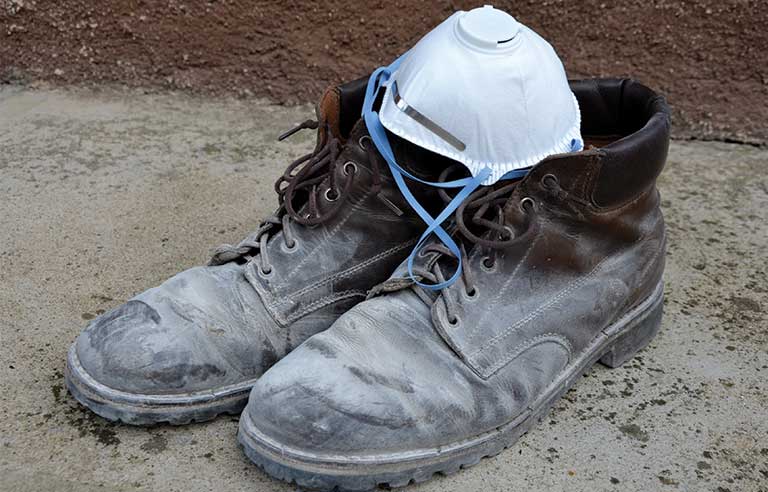Homebuilding in the Time of Coronavirus
A Construction Executive on Job Site Challenges and Daily Teamwork

During this pandemic, construction remains an essential industry. Generally, job sites and supply yards continue to operate, though mostly as scaled-back versions of their former selves. Looking out for employees, subcontractors, and clients in the face of unprecedented uncertainty is very challenging, says Derek Shue, a Giffin & Crane executive vice president. But, he adds, daily planning and adaptability help tremendously. We caught up with Shue for details.
When did G&C start monitoring coronavirus? The moment we heard how troublesome it was becoming in China, we started talking about how it could affect the construction industry. In our global economy, even items “Made in the USA” usually have a part or process through a Chinese factory.
Then the concern became what would happen if it spread to Santa Barbara and how would we make sure that our employees, trade partners, and clients are safe. We are fortunate that we started early and have stayed ahead on most fronts.
Were you able to modify existing safety guidelines? One thing that came out early was the recommendation for good hand hygiene and general cleanliness. We have always held these in high regard and have included handwashing stations on all job sites for years. One thing we stepped up is routine disinfecting of frequently touched surfaces, such as hand railings, porta-potty doors, door and window hardware, and drinking-water stations.
In general, do contractors receive updated guidelines during emergencies? Our operations team has been pretty focused on keeping up with all the updated information. It has changed daily (sometimes hourly), and the only way to get that info is to go looking for it. Most of the information we have found about best practices has either been on the state and federal webpages or through affiliations with peers around the country.
Adjustments at the office? Early on, we got everyone set up to work from home. This showed to be very valuable when the news came on March 19 about a statewide stay-at-home order. Since then, we have closed our office to public visits. All of our meetings have gone digital, and we use Zoom, GoToMeeting, and FaceTime to connect with clients, consultants, and team members.
Adjustments in the field? Our field teams have been able to keep sites open; our projects continue on. It’s amazing to see everyone working together (albeit separately) to keep progress moving and keep their distancing appropriate. Crew sizes on all sites have reduced a bit in order to achieve the protocols put in place, but everyone is washing their hands frequently, wearing masks and gloves, and policing themselves to make sure all are safe. We have also asked that no one share tools.
Not everyone is comfortable working right now, and that’s okay. But we continue to try to create the opportunity for those who want to work safely.
Biggest challenges so far? I think the hardest part for the construction industry has been the uncertainty of what’s coming next and the seemingly constant and immediate change in guidelines and recommendations. Our executive team meets every morning via conference call to review any changes in government standards and discuss new challenges.
But our challenges are far less than those facing the community as a whole. We are fortunate to have the option to work when many others don’t. Navigating a pandemic was not something I thought I would ever need to consider in my career, but the team we have in place has made this process manageable, and for that I’m grateful.



